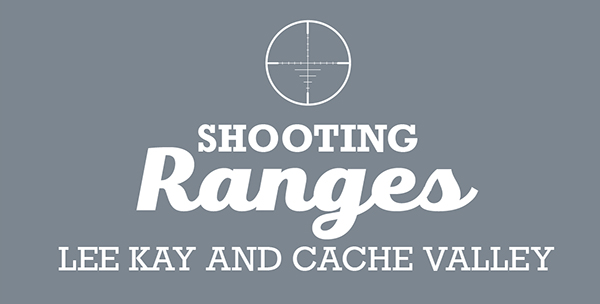Record $4.8 million raised for habitat restoration, other wildlife projects through 2024 conservation permits
Salt Lake City — Dozens of projects benefiting wildlife — including wildlife research, conservation and habitat restoration projects — have been funded after a record $4.8 million was committed to the projects by participating conservation groups during the annual conservation permit project funding meeting held on April 10.
The Utah Conservation Permit Program was launched in 1980 in an effort to increase funding for conservation projects for fish and wildlife throughout Utah. Each year, the Utah Wildlife Board designates a small percentage of limited-entry and once-in-a-lifetime hunting permits as "conservation and expo permits."
Conservation projects
Many of the conservation projects that are funded by these special permits are proposed to Utah's Watershed Restoration Initiative, a Utah Department of Natural Resources partnership-based program launched in 2006. The WRI focuses on improving watershed health and biological diversity, increasing water quality and yield, improving wildlife habitat, and increasing opportunities for sustainable uses of natural resources. Over 148,000 acres across Utah were improved through WRI habitat projects in 2022–23.
Proposals for the projects are due around the first week of January each year. After reviewing all of the proposals, the Utah Division of Wildlife Resources and WRI committees decide which habitat and conservation projects are of the highest priority. They then give the conservation groups an opportunity to review these projects, and the groups determine during the annual meeting which projects to assign funds to. The annual funding meeting has been taking place since 2008.
"These projects help improve wildlife habitat and watershed health throughout the state, which helps our fish and wildlife populations in these areas," Utah's Watershed Restoration Initiative Program Director Tyler Thompson said. "These projects are crucial, and the conservation permits and funds help make them possible."
During the April 10 meeting, DWR biologists presented 105 projects, 88 of which were then partially or fully funded by the conservation groups in attendance. The groups assessed the individual projects' goals, benefits and costs, and then selected the projects they wanted to support. A total of 103,276 acres of fish and wildlife habitat will be improved as a result of the projects.
The funded projects will benefit wildlife in several ways, including:
- Protecting and improving critical winter and summer ranges for deer and elk, particularly in sagebrush and aspen ecosystems.
- Helping the DWR better understand movements and migration routes of big game and other species in Utah so they can build wildlife crossings and improve habitat in crucial areas.
- Monitoring survival rates and condition of adult deer does and fawns to help the DWR better understand the status and trends in deer populations throughout Utah.
- Increasing resistance to uncharacteristically large and severe wildfires.
- Addressing impacts of developments (roads, fencing, etc.) on wildlife migration corridors.
The projects that received the highest funding from the meeting were:
- Burnt Beaver Project: This is an ongoing landscape project on the Uinta-Wasatch-Cache National Forest in Summit County aimed at reducing the risk of severe wildfire through decreased hazardous fuel loads, improving wildlife habitat and restoring aspen trees on roughly 861 acres. This project received $287,500 in funding.
- Twelve-Mile Watershed Restoration Project: This project is located on the Twelve-Mile Wildlife Management Area in Sanpete County. In the past, this area has experienced large mudslides, and this project will improve big game summer and winter range habitats, reduce wildfire risks, stabilize the soil, and improve the water quantity and quality. This project received $260,000 in funding.
- North Zone Aspen Restoration: This project will restore aspen tree communities by removing conifer trees located within the aspen stands on roughly 1,200 acres in the Swan Flat area of the Logan Ranger District of the Uinta-Wasatch-Cache National Forest. This project received $160,000 in funding.
"We are really grateful for the support of our conservation partners who believe in wildlife conservation and want to help improve wildlife populations and habitats in Utah," DWR Habitat Conservation Coordinator Daniel Eddington said.
Most of these habitat projects take multiple years to plan and complete. Funds for these projects become available July 1, with much of the seeding and restoration work being conducted in the fall, during prime planting season.
Conservation permits
The conservation permits are offered to conservation and sportsmen's groups who then auction them at banquets, fundraisers and other events. The conservation groups provide 90% of the money raised from these permit sales toward conservation and research projects like habitat enhancement, wildlife transplants, aerial surveys and deer survival studies. The remaining 10% of the proceeds are retained by the conservation groups to help cover administrative costs.
Expo permits
The expo permits are not auctioned, but rather, are offered once each year through a drawing held at the Western Hunting and Conservation Expo in Salt Lake City. Utahns and nonresidents who attend the expo can apply for these permits. There is a $5 application fee and part of that fee goes to the conservation groups hosting the expo to help pay for costs associated with hosting and running the permit drawing. The remaining portion of the application fee is used for conservation efforts.
How do these permits benefit Utah hunters?
Since 2001, conservation permits have generated more than $80 million for conservation work in Utah. If not for the revenue from these permits, the DWR and its partners would have much less funding to complete high-priority wildlife conservation projects. The conservation and expo permit funding has led to the enhancement of thousands of acres of crucial habitats and the completion of important research to help the DWR better manage big game populations.
The conservation groups that participated in the meeting and helped fund the conservation projects include:
- Mule Deer Foundation
- Utah Wild Sheep Foundation
- National Wild Turkey Federation
- Rocky Mountain Elk Foundation
- Safari Club International
- Sportsmen for Fish and Wildlife
- Utah Archery Association
- Wildlife Conservation Foundation
- Cooperative Wildlife Management Unit Association
















